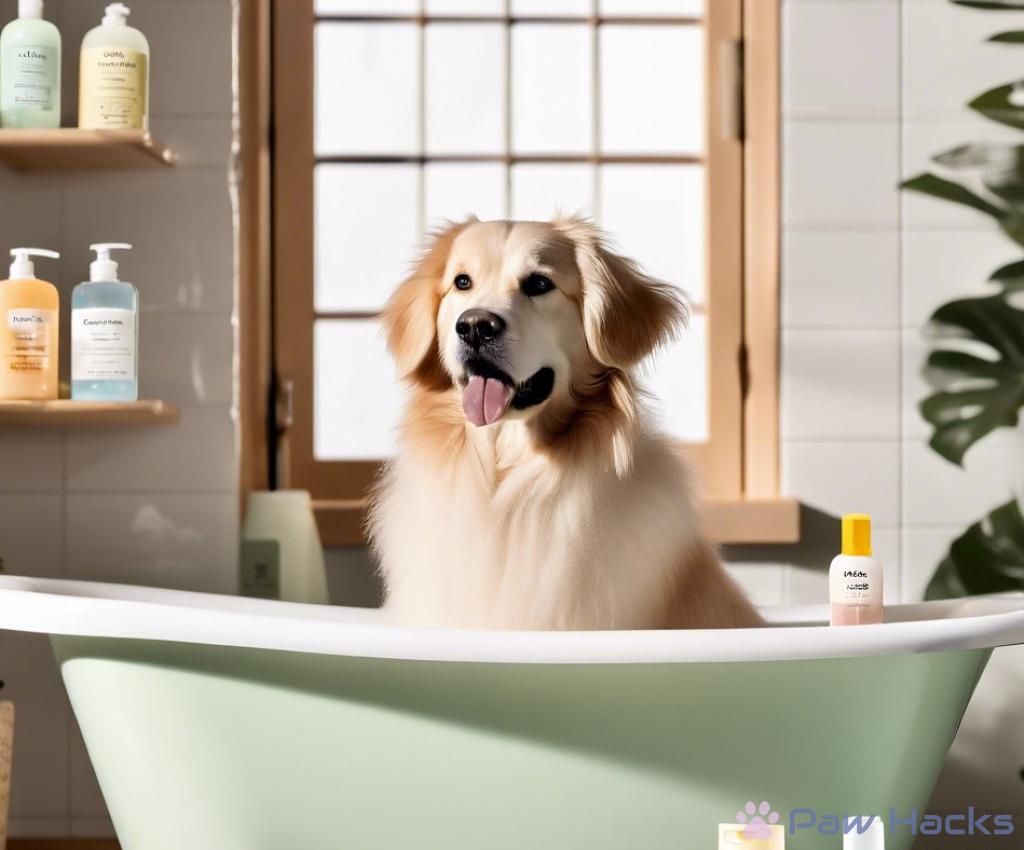Bathing Dogs with Sensitive Skin
Choosing the Right Shampoo for Your Dog’s Sensitive Skin

Just like humans, dogs can have sensitive skin that requires special care and attention. If your furry friend has experienced dryness, irritation, or allergic reactions, choosing the right shampoo becomes essential. This article will guide you through the best shampoos available, ensuring that bath time is a pleasurable experience for both you and your dog.
When selecting a shampoo for your dog, it’s important to pay attention to the ingredients. Some components can soothe and nourish sensitive skin, while others may cause irritation. Here’s a helpful list of ingredients that are beneficial:
- Aloe Vera: Known for its soothing properties, aloe vera can help calm irritated skin.
- Oatmeal: A natural ingredient that provides relief from itchiness and hydrates the skin.
- Hypoallergenic Formulas: These shampoos are designed to minimize allergic reactions and are ideal for sensitive skin.
- Coconut Oil: A great moisturizer that also has antibacterial properties.
Equally important is knowing what to avoid in dog shampoos. Certain ingredients can exacerbate skin sensitivities and lead to discomfort. Keep an eye out for:
- Fragrances: Artificial scents can cause irritation and allergic reactions.
- Sulfates: These harsh detergents strip natural oils from the skin, leading to dryness.
- Parabens: Often used as preservatives, parabens may have potential harmful effects.
By being informed about both the beneficial and harmful ingredients, you can make a well-rounded decision for your pet’s skincare.
Step-by-Step Guide to Bathing Your Dog Gently

Bathing a dog with sensitive skin requires a gentle approach to ensure their comfort and well-being. It’s crucial to create a calm environment and use the right techniques to minimize stress during bath time. By following a systematic process, you can make this experience enjoyable for both you and your furry friend.
Before diving into the bath, it’s essential to gather all necessary supplies. This includes a gentle, hypoallergenic shampoo specifically designed for sensitive skin, a soft towel, and a non-slip mat for the bathtub or wash area. Additionally, ensuring the water temperature is lukewarm will help keep your dog comfortable during the wash. Preparation is key to a smooth bathing experience.
Once everything is ready, it’s time to start bathing your dog. Begin by thoroughly wetting your dog’s fur with lukewarm water, avoiding their eyes and ears. Use a gentle spray or cup to control the flow of water. Apply a small amount of the recommended shampoo to your hands, lather it gently, and massage it into your dog’s coat, focusing on areas that may be prone to irritation. Be sure to rinse thoroughly to remove all shampoo residue, as any leftover product can cause more discomfort.
After rinsing, wrap your dog in a soft towel to absorb excess water. This step not only helps keep them warm but also reduces the likelihood of skin irritation. If your dog tolerates it, you may use a low-heat setting on a blow dryer, keeping it at a safe distance. Pay attention to their reactions and adjust accordingly to ensure a positive experience.
After the bath, it’s important to conduct a gentle inspection of your dog’s skin and coat. Look for any signs of irritation or unusual dryness, as these may indicate that further care is needed. Following up with a soothing, hypoallergenic conditioner can provide additional moisture and help ease any lingering discomfort. Regular bathing with the right products can significantly improve your dog’s skin condition, making each bath a step toward a happier, healthier pet.
Signs Your Dog’s Skin Needs Extra Care After Bathing
Even after a gentle bathing session, sensitive skin can react unpredictably. It’s vital for pet owners to recognize the signs that indicate their dog’s skin requires extra attention. Being proactive can help prevent discomfort and maintain healthy skin.
After bathing, observe your dog’s behavior and skin condition closely. Here are some signs that may suggest your dog’s skin needs additional care:
- Excessive Scratching or Licking: If your dog is persistently scratching or licking their skin, it may indicate irritation or discomfort.
- Redness or Inflammation: Visible redness or swollen patches can be a sign of an adverse reaction to the shampoo or the bathing process itself.
- Dry Flaky Skin: If your dog’s skin appears dry or flaky, it may be lacking moisture, suggesting that a more hydrating product is necessary.
- Hot Spots: These localized areas of inflammation can develop after bathing if the skin is irritated, requiring immediate attention.
- Unusual Odor: If an unpleasant smell persists even after bathing, it may indicate an underlying issue that needs to be addressed.
If you notice any of these signs, here are some actionable steps to help soothe your dog’s sensitive skin:
- Consult your veterinarian to identify the underlying cause of the irritation.
- Switch to a more suitable hypoallergenic shampoo if necessary.
- Incorporate a moisturizing conditioner designed for sensitive skin into your routine.
- Consider using oatmeal baths or soothing sprays that can help alleviate itchiness.
- Monitor your dog’s skin regularly to catch any changes early.
Natural Remedies to Soothe Your Dog’s Sensitive Skin
When your dog struggles with sensitive skin, natural remedies can often provide a gentle yet effective solution. Many pet owners are turning to nature for relief, seeking out ingredients that not only soothe but also nourish their furry companion’s skin. These natural alternatives can complement your bathing routine, ensuring that your dog’s skin remains healthy and irritation-free.
Several kitchen staples can serve as incredible remedies for your dog’s sensitive skin. For instance, coconut oil is not just a cooking ingredient; it’s a powerful moisturizer that can hydrate and protect your dog’s skin. Its antibacterial properties can also help prevent infections. Simply apply a small amount to the affected areas and gently massage it in. Similarly, apple cider vinegar is a natural antiseptic that can balance the skin’s pH levels. Diluting it with water and using it as a rinse after shampooing can provide relief from itchiness.
In addition to kitchen remedies, certain herbs and plants can be invaluable in promoting skin health. Chamomile is known for its calming properties; brewing chamomile tea and using it as a rinse can help reduce inflammation and soothe irritation. Furthermore, aloe vera is a well-known natural healer that provides immediate relief for irritated skin. Applying fresh aloe gel directly to problem areas can not only soothe but also promote healing. It is essential to ensure that any natural remedy is safe for your dog, so always consult with your veterinarian before trying new treatments.
By integrating these natural remedies into your dog’s routine, you can enhance their bathing experience and promote healthier skin. Regular use of these soothing agents can lead to noticeable improvements, allowing your furry friend to enjoy a more comfortable and happy life.
Expert Tips for Reducing Bath Time Stress for Your Dog
Bathing your dog, especially one with sensitive skin, can be a challenging experience. To minimize stress, establishing a calm environment is critical. Before you begin, it’s helpful to prepare the bathing area by eliminating loud noises and distractions. Soft music or gentle sounds can create a soothing atmosphere that helps ease your dog’s anxiety. Additionally, ensuring the room is warm and comfortable will prevent your pet from feeling cold during the bath, which can contribute to stress. Remember, a relaxed environment sets the tone for a positive bathing experience.
To further reduce anxiety during bath time, incorporating positive reinforcement techniques can be incredibly effective. Start by associating the bath with positive experiences. Use treats, praise, and affectionate words to encourage your dog to enter the bathing area willingly. During the bath, continue to offer treats for good behavior, creating a positive association with the process. If your dog seems particularly anxious, consider breaking the bath into smaller, manageable segments. For instance, you can first focus on wetting the fur and then take a break before applying shampoo. This gradual approach can help your dog feel more comfortable and in control.
Timing can significantly impact your dog’s level of stress during bath time. Schedule baths when your dog is naturally calm, perhaps after a long walk or play session. This way, your dog is less likely to be exuberant and more receptive to the bathing process. Additionally, using the right tools can make a world of difference. A non-slip mat is essential for safety, preventing slips and falls that can heighten anxiety. Opt for a handheld sprayer or a cup to control water flow, ensuring that your dog isn’t overwhelmed by sudden splashes. With the right approach, you can transform bath time into a bonding experience rather than a stressful chore.
Share this content:



